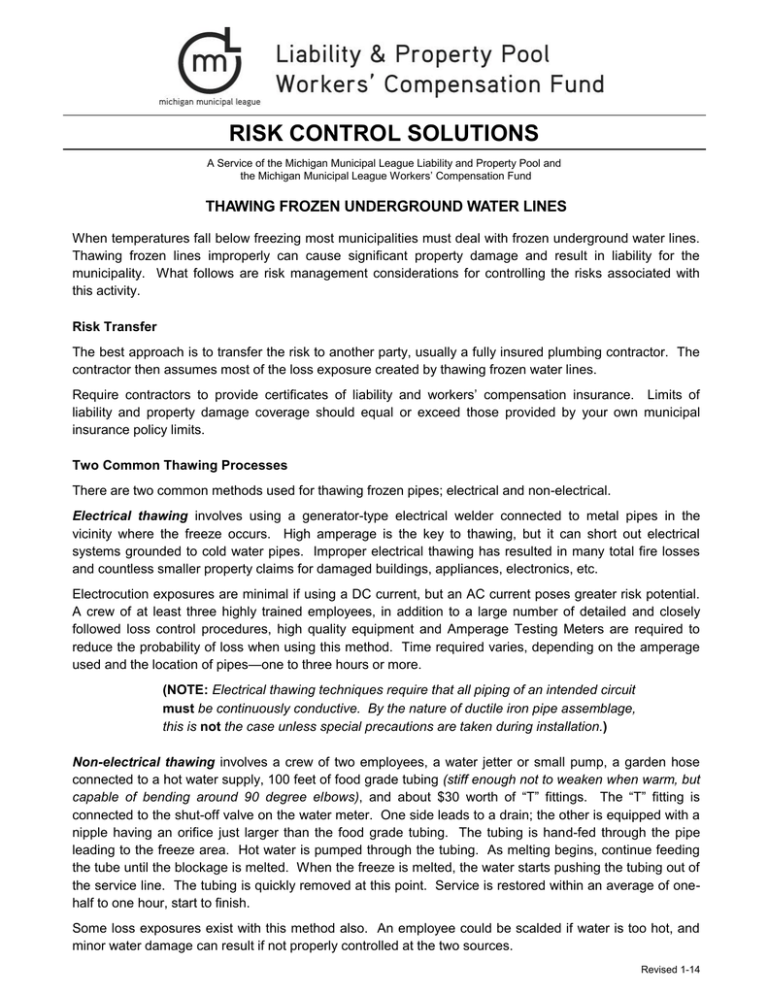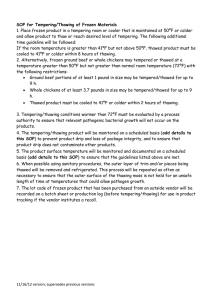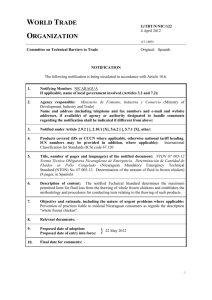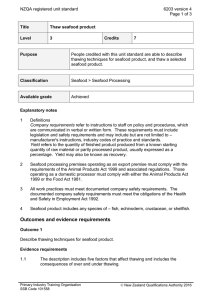Thawing Frozen Underground Water Lines
advertisement

RISK CONTROL SOLUTIONS A Service of the Michigan Municipal League Liability and Property Pool and the Michigan Municipal League Workers’ Compensation Fund THAWING FROZEN UNDERGROUND WATER LINES When temperatures fall below freezing most municipalities must deal with frozen underground water lines. Thawing frozen lines improperly can cause significant property damage and result in liability for the municipality. What follows are risk management considerations for controlling the risks associated with this activity. Risk Transfer The best approach is to transfer the risk to another party, usually a fully insured plumbing contractor. The contractor then assumes most of the loss exposure created by thawing frozen water lines. Require contractors to provide certificates of liability and workers’ compensation insurance. Limits of liability and property damage coverage should equal or exceed those provided by your own municipal insurance policy limits. Two Common Thawing Processes There are two common methods used for thawing frozen pipes; electrical and non-electrical. Electrical thawing involves using a generator-type electrical welder connected to metal pipes in the vicinity where the freeze occurs. High amperage is the key to thawing, but it can short out electrical systems grounded to cold water pipes. Improper electrical thawing has resulted in many total fire losses and countless smaller property claims for damaged buildings, appliances, electronics, etc. Electrocution exposures are minimal if using a DC current, but an AC current poses greater risk potential. A crew of at least three highly trained employees, in addition to a large number of detailed and closely followed loss control procedures, high quality equipment and Amperage Testing Meters are required to reduce the probability of loss when using this method. Time required varies, depending on the amperage used and the location of pipes—one to three hours or more. (NOTE: Electrical thawing techniques require that all piping of an intended circuit must be continuously conductive. By the nature of ductile iron pipe assemblage, this is not the case unless special precautions are taken during installation.) Non-electrical thawing involves a crew of two employees, a water jetter or small pump, a garden hose connected to a hot water supply, 100 feet of food grade tubing (stiff enough not to weaken when warm, but capable of bending around 90 degree elbows), and about $30 worth of “T” fittings. The “T” fitting is connected to the shut-off valve on the water meter. One side leads to a drain; the other is equipped with a nipple having an orifice just larger than the food grade tubing. The tubing is hand-fed through the pipe leading to the freeze area. Hot water is pumped through the tubing. As melting begins, continue feeding the tube until the blockage is melted. When the freeze is melted, the water starts pushing the tubing out of the service line. The tubing is quickly removed at this point. Service is restored within an average of onehalf to one hour, start to finish. Some loss exposures exist with this method also. An employee could be scalded if water is too hot, and minor water damage can result if not properly controlled at the two sources. Revised 1-14 Risk Control Solutions – Thawing Frozen Underground Water Lines, p. 2 Non-electrical thawing is not a solution to all frozen water line situations. For instance, large diameter freezes will require special risk management considerations. But all things considered, non-electrical thawing is more cost-effective and less hazardous for thawing most frozen underground water lines. Summary The potential risk of electrical thawing exceeds the expected benefits. Risk transfer is the preferred method. Non-electrical thawing is an option, but again, there is some risk involved. “T” fitting design example for non-electrical thawing method For more information, contact the League’s Loss Control Services, or MML Risk Management Services. Important Contact Information MML Risk Management Services Loss Control Services Note: 734/662-3246 or 800/653-2483 800/482-2726 This document is not intended to be legal advice. It does not identify all the issues surrounding the particular topic. Public agencies are encouraged to review their procedures with an expert or a competent attorney who is knowledgeable about the topic. Revised 1-14






